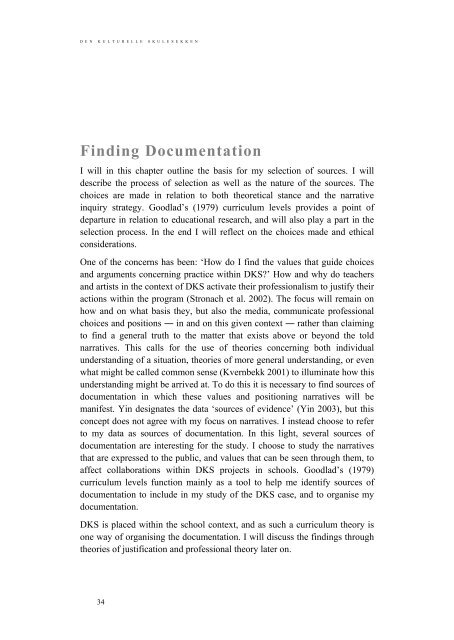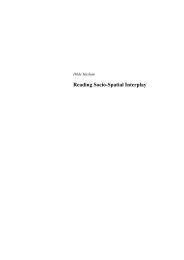CON ⢠TEXT - Arkitektur- og designhøgskolen i Oslo - AHO
CON ⢠TEXT - Arkitektur- og designhøgskolen i Oslo - AHO
CON ⢠TEXT - Arkitektur- og designhøgskolen i Oslo - AHO
- No tags were found...
Create successful ePaper yourself
Turn your PDF publications into a flip-book with our unique Google optimized e-Paper software.
D E N K U L T U R E L L E S K U L E S E K K E NFinding DocumentationI will in this chapter outline the basis for my selection of sources. I willdescribe the process of selection as well as the nature of the sources. Thechoices are made in relation to both theoretical stance and the narrativeinquiry strategy. Goodlad’s (1979) curriculum levels provides a point ofdeparture in relation to educational research, and will also play a part in theselection process. In the end I will reflect on the choices made and ethicalconsiderations.One of the concerns has been: ‘How do I find the values that guide choicesand arguments concerning practice within DKS?’ How and why do teachersand artists in the context of DKS activate their professionalism to justify theiractions within the pr<strong>og</strong>ram (Stronach et al. 2002). The focus will remain onhow and on what basis they, but also the media, communicate professionalchoices and positions ― in and on this given context ― rather than claimingto find a general truth to the matter that exists above or beyond the toldnarratives. This calls for the use of theories concerning both individualunderstanding of a situation, theories of more general understanding, or evenwhat might be called common sense (Kvernbekk 2001) to illuminate how thisunderstanding might be arrived at. To do this it is necessary to find sources ofdocumentation in which these values and positioning narratives will bemanifest. Yin designates the data ‘sources of evidence’ (Yin 2003), but thisconcept does not agree with my focus on narratives. I instead choose to referto my data as sources of documentation. In this light, several sources ofdocumentation are interesting for the study. I choose to study the narrativesthat are expressed to the public, and values that can be seen through them, toaffect collaborations within DKS projects in schools. Goodlad’s (1979)curriculum levels function mainly as a tool to help me identify sources ofdocumentation to include in my study of the DKS case, and to organise mydocumentation.DKS is placed within the school context, and as such a curriculum theory isone way of organising the documentation. I will discuss the findings throughtheories of justification and professional theory later on.34
















